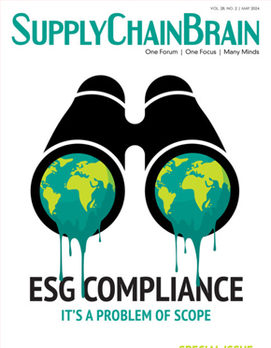
The importance of aligning operational activities can’t be overstated. How well a company carries out activities to create, produce, sell and deliver products to customers is the differentiator between building a strong, successful business or risking a decline in profits and losing customers to competitors.
Every company has its own unique strengths. Yet those that possess market-leading value are the ones that will survive challenging times and thrive into the future.
What makes these market leaders stand out? First and foremost, it’s the high degree of alignment across all functions within the business. The ability to share information about unexpected events throughout the organization, then change and adapt to deliver an excellent customer experience, is key.
Companies establish planning processes to align operational activities. Based on the well-established principles of sales and operations planning (S&OP) developed in the 1980s, they facilitate cross-functional collaboration and alignment. Often these efforts are limited, preventing the various stakeholders from sharing information about unexpected events. As a result, functions can be blindsided, with little or no ability to respond in a timely manner. This ineffectiveness results in unmet demand, operational disruption, idle capacity and excessive inventory investment. Ultimately, each of these shortcomings has a direct impact on customer satisfaction and financial performance.
Regardless of industry, market leaders have the highest degree of alignment across product, sales, marketing, supply operations and finance. They consistently deliver high customer value because they share information about unexpected events, such as demand spikes, capacity fluctuations and component shortages, across the organization. As a result, they’re able to make adjustments and alternative plans to avoid or mitigate crises.
For too many companies, the S&OP journey stalls before they realize the true potential of cross-functional alignment. To make sure they have a high-performance business model, companies must overhaul S&OP.
To repair what’s broken in your organization, and establish a solid S&OP framework that can adapt to today’s volatile market, there are four steps you should take:
Get executive support and participation in the S&OP process. Peter Drucker once said that only three things happen naturally in organizations: “friction, confusion, and underperformance. Everything else requires leadership.” To avoid these problems, it’s vital that executive leadership — from the CEO and president to managing directors, general managers and P&L owners — are involved from the start. Engaging executives in S&OP meetings provides a forum for routine decision-making, where leaders can consider team recommendations and determine the best course of action.
To gain executive support, engage your company’s executive champion — someone who’s trusted and respected by your CEO, shares your S&OP passion and is willing to take a stand. Then start with an executive S&OP pilot, focusing on one or two product families. This is a low-risk, low-cost approach that will enable executive leaders to see firsthand how their engagement in S&OP gives them improved visibility, and the opportunity to resolve issues before they impact company performance.
Scope out full cross-functional S&OP. True S&OP alignment occurs when all activities are focused on the company’s goals and synchronized across all functional areas. S&OP success depends on participation by all functional leaders. The absence of any area from the process hinders the ability to deliver customer value and financial performance. Without full stakeholder involvement, companies risk mismatched product volume, mix, location or timing, all of which negatively affect the company’s performance.
If your S&OP process reveals an empty seat in a team that should at a minimum include the leaders of product, sales, marketing, supply operations and finance, you likely have a problem. The first step is inviting the missing member to key S&OP meetings. Their level of participation should increase over time. Perfection isn’t required to start, and shouldn’t get in the way of progress. To show the importance of these meetings, you should share objective and constructive analysis of how their participation may have avoided or minimized past mismatches. By understanding this connection, you’ll establish the importance of S&OP.
When several S&OP seats are empty, a different approach may be required. You might need an internal executive, S&OP expert or a third-party consultant to assess your company’s S&OP process. They can suggest upgrades and explain how to best expand to full cross-functional participation.
Don’t compromise your business processes for the sake of technology. Each company conducts its business operations in a unique way based on a variety of factors, including industry, markets, culture, practices and leadership. As a result, there’s no "one-size-fits-all" S&OP process, and that’s why for many companies S&OP utilizes a patchwork of Excel spreadsheets and systems.
S&OP technology solutions should significantly simplify, not complicate, business processes and establish a single, cross-functional planning environment based on shared data that naturally aligns plans. The success of an S&OP solution depends on its ability to enable rather than dictate business operations. A forced-fit solution and inherent process compromise typically result in low adoption and ultimately jeopardize S&OP success.
Consider these four points when evaluating S&OP solutions:
- Process compromise. Place high priority on the solution’s fit to your business operations. Depending on the solution type, more time (and in some cases, a pilot) might be required for fit confirmation.
- Ease of deployment. Longer implementation times increase the risk that the solution will be outdated upon completion as a result of changing business conditions or opportunities. Minimize time to value in both the solution selection and project planning phases. Plan for demonstrable value in eight to 12 weeks. Avoid anything longer.
- Ease of change. Change is inevitable. Technology must flex with the business or it becomes a friction point and slows it down. Be cautious if minor modifications require more than an hour to get into production. Avoid those that take more than a day.
- Business-user administration. Modern solutions can be administered by a business user without significant support from IT. This is a welcome development, since most IT departments operate at capacity. Avoid a solution if technical resources are needed for application administration.
Compromising your business processes in order to adopt S&OP technology is no longer required. Protect the practices that reflect your business model and incorporate those that improve performance. You should invest in a solution that enables both and provides adaptability to your changing conditions.
Practice constructive issue resolution. By its very nature, S&OP produces disagreement. After all, it’s the process of developing the tactical plans necessary to achieve the corporate strategy. Functional heads are certain to have different opinions about the best approach. The S&OP team needs to be able to have candid and constructive discussions about issues and challenges. Otherwise, tactical plans won’t align with strategy, compromising the S&OP program and corporate performance.
Consider the experience at Ford Motor Company. After its worst performance in history, Ford brought in former Boeing executive Alan Mulally as its new chief executive officer. In Why Great Leaders Don’t Take Yes for an Answer, Michael A. Roberto explains that Mulally joined Ford when the executive management team was in discord. The company was highly siloed and rarely had candid discussions of problems it faced. To address this, Mulally immediately implemented a Thursday morning “business plan review” and, to guide constructive disagreement, established “working together behaviors” that required supporting positions with facts and data, no personal attacks or put-downs of any team members, and no side conversations.
Despite Mulally’s mandate and these guidelines, the team continued to have difficulty with transparency and candid dialogue. The turning point came when an executive reported bad news and Mulally stood, vigorously applauded, and commended the executive for the transparency and visibility he’d provided to the team. Mulally then asked the team how they could help, and they in turn offered constructive suggestions and assistance. This commitment to problem-solving cleared the way for big changes at Ford, helping the company weather the Great Recession and resulting in workers receiving the highest profit-sharing bonus in the company’s history.
If disagreements arise, it’s important to have “working together behaviors” that guide S&OP collaboration. That will make it safe for anyone to speak up and create an environment that focuses on problem-solving instead of finger-pointing.
Fully realizing the benefits of an S&OP program is what sets apart those companies that are surviving and thriving in today’s increasingly dynamic environment. Often the biggest barrier to achieving higher value is a gap in the S&OP foundation. By getting overall buy-in through executive level engagement, cross-functional alignment and form-fit S&OP technology, and ensuring all teams work smoothly together, companies can achieve the alignment necessary to optimize S&OP.
Ed Lewis is president and chief executive officer of Valizant.






